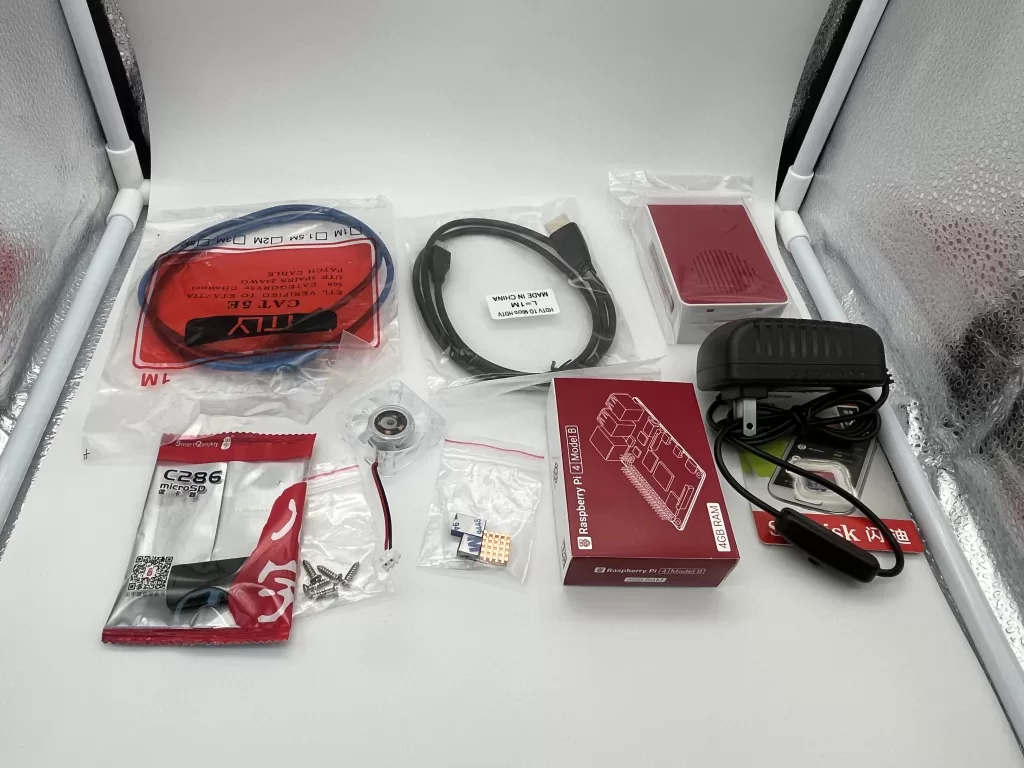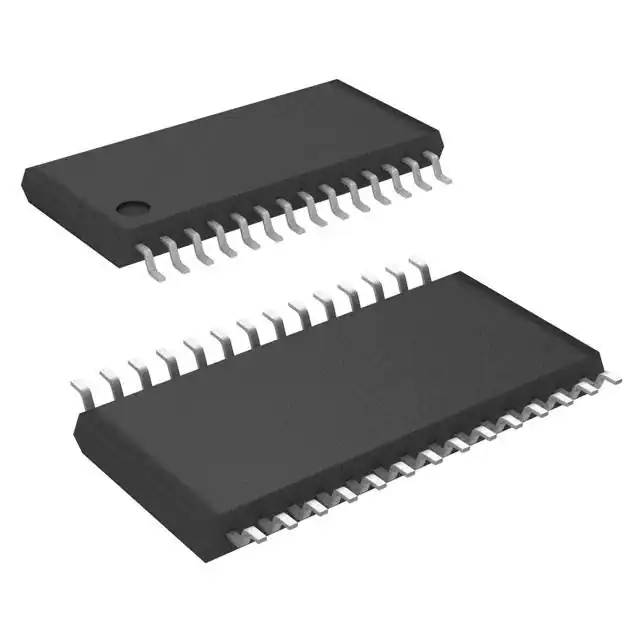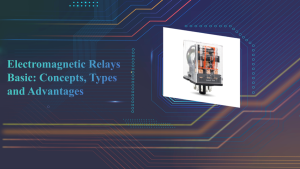In this blog, we will explore the basics of electromagnetic relays including their concepts, types, and advantages so that readers will foster a de...
View detailsRG6 vs RG59: Which Coaxial Cable Should You Choose?
In this blog, we will delve into the key distinctions between RG6 and RG59 cables, empowering you to make an informed decision for your specific needs.
What is RG6 Cable?

RG6, which stands for Radio Guide 6, is a type of coaxial cable. It consists of an inner conductor wire surrounded by insulation, a braided metal shield, and an outer jacket. This design protects the signal from electromagnetic interference (EMI), resulting in clean and reliable transmission. RG6 cables have a typical impedance of 75 ohms, making them suitable for a wide range of applications.
What is RG6 Cable Used For?
RG6 cables are the primary components of home entertainment and data transfer systems. Here are some of their main applications:
- Cable TV: The industry standard for transmitting cable TV signals. They efficiently transfer video and audio signals, resulting in high-quality images and audio.
- Satellite TV: Connect the satellite dish to the receiver, which will convey the satellite signal for decoding and watching.
- High-Speed Internet (Cable and Satellite): ISPs widely use this technology to provide cable or satellite internet connections. They effectively transport data signals, providing a dependable and speedy internet experience.
Does Spectrum Use RG6 or RG11?
Spectrum typically uses RG6 cables for its cable TV and internet service installations. RG11 cable, with its thicker design and larger signal capacity, is generally used for longer cable runs or applications that require more bandwidth, such as commercial settings.
What is RG59 Cable?

RG59 is another type of coaxial wire that is similar in architecture to RG6 but with several notable variances. It also has an inner conductor, insulation, braided shield, and an outer jacket. However, RG59 cables are typically thinner and have a lower impedance (75 ohms).
What is RG59 Cable Used For?
While RG59 cables are not as versatile as RG6, they do have their specific applications.
- Standard-Definition Video: Can deliver standard-definition video signals; commonly utilized in older CCTV systems and legacy video equipment.
- Low-Speed Data Transmission: Can be utilized for short-distance, low-speed data transmission tasks, such as connecting a modem to a router nearby.
- Antenna Connections: Used to connect antennas to televisions and other devices.
Will RG59 Work for TV?
For modern high-definition (HD) televisions, RG59 cables are not recommended. Their decreased signal capacity can cause visual quality reduction, especially over longer cable lengths. RG6 cables are the best option for an ideal HD TV viewing experience. However, for older standard-definition TVs with less crucial picture quality, RG59 may suffice.
Can RG6 Cable Be Used for Internet?
Yes. ISPs commonly employ RG6 cables to supply cable and satellite internet due to their capacity to handle data signals efficiently for high-speed internet connections.
Can RG59 Be Used for Internet?
Technically, RG59 cables can be used to link low-speed internet over small distances. However, it is not suitable for modern high-speed internet requirements. The lesser signal capacity of RG59 can result in signal loss and slower internet rates, particularly over longer cable connections. RG6 cables are the best solution for dependable and speedy internet connectivity.
RG6 vs RG59
Now that we understand the basic functionalities of each cable type, let's delve deeper into their key differences:
| Feature | RG6 Cable | RG59 Cable |
| Size | Thicker diameter | Thinner diameter |
| Impedance | 75 ohms | 75 ohms (usually) |
| Signal Capacity | Higher | Lower |
| Applications | Cable TV, Satellite TV, High-Speed Internet | Standard-Definition Video, Low-Speed Data, Some Antenna Connections |
| Cost | Slightly higher | Lower |
Video related to RG6 vs RG59
How Does RG6 Cable Work?
The coaxial configuration of RG6 wires is what makes them so efficient. The inner conductor carries the signal, while the braided metal shield acts as a barrier, preventing external electromagnetic interference from disturbing the transmission. The outer jacket protects the cable from physical damage and environmental conditions. When an electrical signal goes through the inner conductor, it generates a small, equal, but opposing current on the shield. This results in a balanced system that eliminates signal distortion while maintaining reliable transmission.
How to Terminate RG6?
- Cut the cable and strip the outer jacket (tool suggested).
- Fold back braid and trim insulator (if necessary).
- Unscrew the F-connector pieces and slip the ferrule onto the cable.
- Trim the inner conductor (if necessary), then place the cable into the connector.
- Slide the ferrule back and crimp the connector with the tool (with the required pressure).
- Screw the connector onto the device (hand tighten).
When using sharp tools, use caution and follow the instructions on the crimping tool.
How to Test RG59 Cable?
While a visual check can identify physical damage to the cable, a more thorough method is advised for evaluating the functionality of an RG59 cable, particularly for important applications. Here's how to test an RG59 cable (or any other coaxial wire):
- Visual Inspection: Look for apparent damage to the outer jacket, exposed metal conductor, or connector. Cracks, cuts, and rust can all degrade signal quality.
- Continuity Test: Using a multimeter set to continuity, touch one probe to the cable's center conductor and the other to the connector shell. A beep from the meter shows continuity. A lack of continuity indicates a break in the cable.
- Signal Strength Test (Optional): For a more advanced test, use specialist tools such as cable testers to assess signal strength and attenuation (signal loss) along the cable length. This can be especially useful for debugging signal quality issues on longer cable lines.
Where to Buy RG59 Cable?
RG59 cables are still readily available at various retailers. Here are some common places to find them:
- Electronics Stores: Major electronics stores like Best Buy or Fry's Electronics typically carry RG59 cables in various lengths.
- Home Improvement Stores: Stores like Home Depot or Lowe's might stock RG59 cables in their cable and wire sections.
- Online Retailers: Major online retailers like Amazon or specialized electronic component suppliers offer a wide selection of RG59 cables from various brands.
Conclusion
Understanding the distinct characteristics of RG6 and RG59 cables empowers you to make an informed decision for your specific needs. For high-definition TV, satellite TV, and reliable high-speed internet connections, RG6 cables are the undisputed champions. However, for standard-definition video applications or short-distance, low-speed data transfer, RG59 cables might suffice. Remember, the key lies in matching the cable's capabilities to the demands of your application. By considering factors like signal quality requirements, cable length, and budget, you can select the right cable type for optimal performance and a seamless user experience.
Ella
Ella is a skilled embedded systems engineer with experience in PCB design and microcontroller programming. She is committed to following the most recent developments in the field and is constantly seeking for ways to apply them to her work.
WEW ALL POSTS BYElla-
Electromagnetic Relays Basics: Concepts, Types and Advantages 570
-
Memory Cards Demystified: Capacities, Types, and Uses 67
In this blog, we will delve into everything you need to know about memory cards, empowering you to choose the right one for your needs.
View details -
Demystifying Potentiometers: What are They and How They Work 385
Potentiometers, sometimes referred to as pots or potmeters, are frequently used as variable resistors in electronic circuits. They are crucial part...
View details -
Understanding Transient Voltage Surge Suppressors 140
In this blog, we will delve into Transient Voltage Surge Suppressor (TVSS). Whether you have a home theater setup or simply a laptop you rely on, u...
View details -
Digital Signal Processors (DSPs) for Video Processing: A Beginner’s Guide 373
In this blog post, we will provide a beginner's guide to DSPs for video processing. We will discuss what DSPs are, how they are used in video proce...
View details -
Mastering the Art of 3-Way Switch Wiring: A Step-by-Step Guide 279
When it comes to electrical wiring, 3-way switches are special because they allow two different places to control one light fixture. Even though th...
View details
 Ampheo Electronics
Ampheo Electronics






